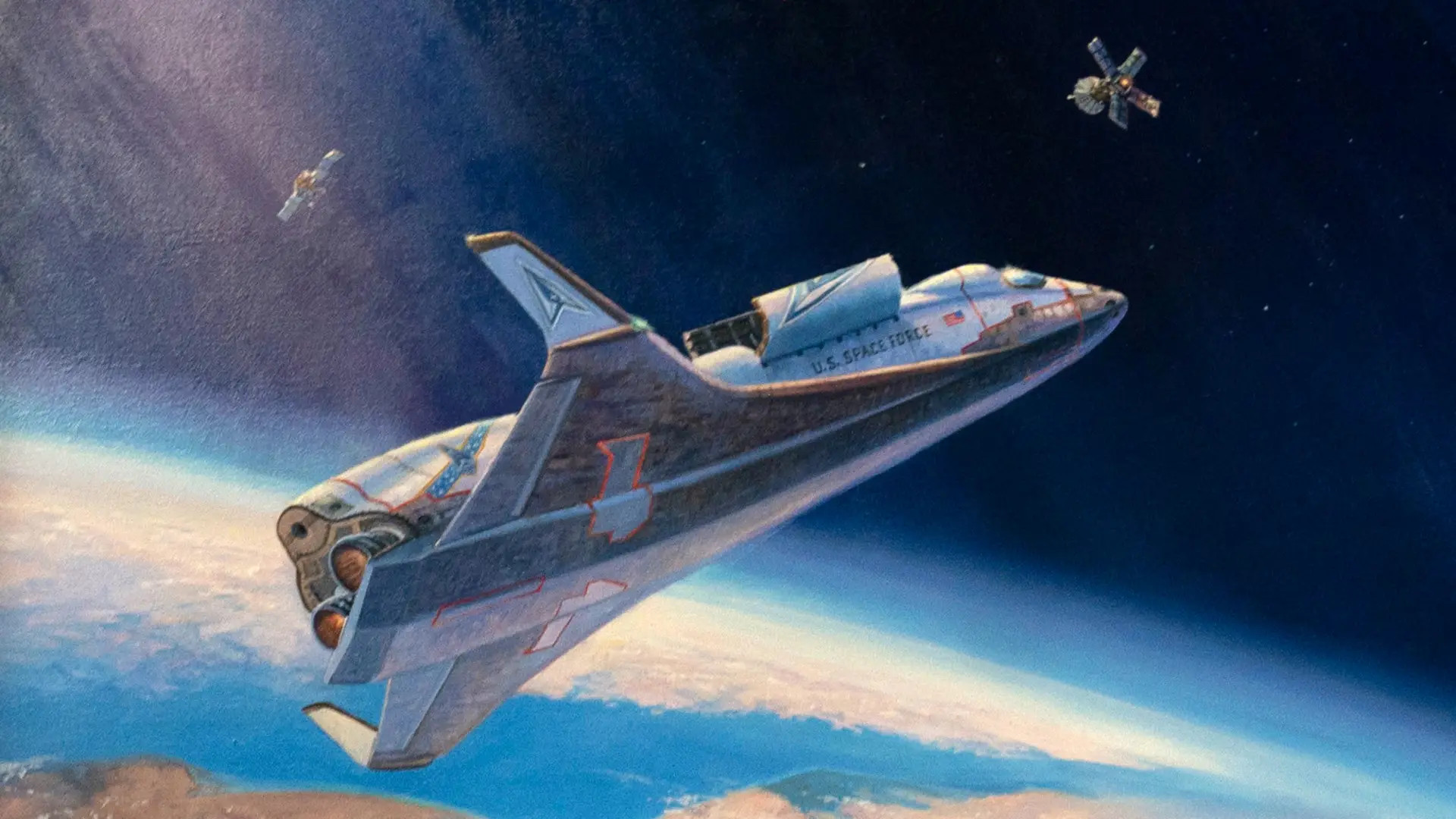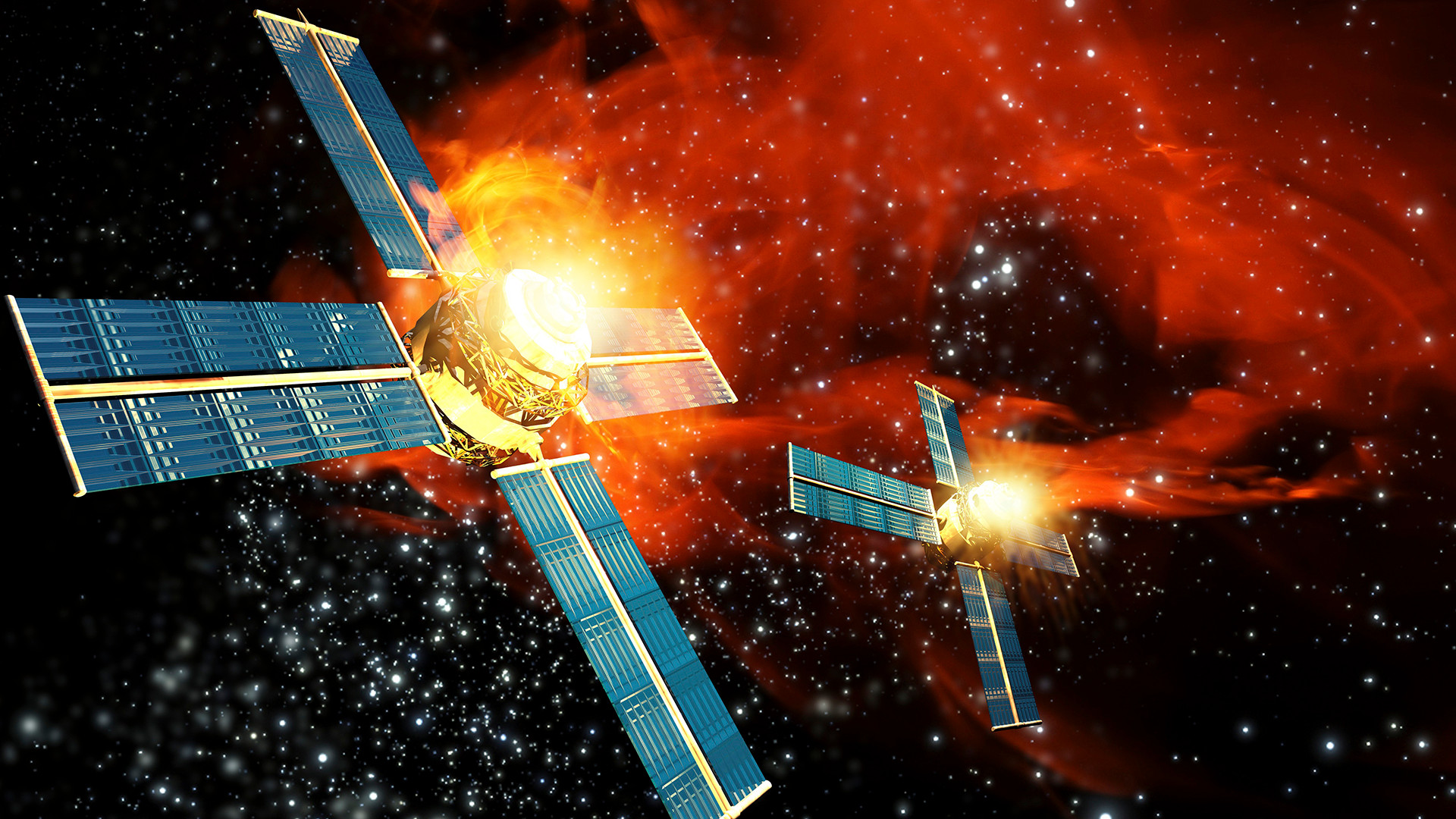The White House has now formally confirmed that a recently disclosed “serious national security threat” is indeed related to a new anti-satellite capability that Russia is developing. But what could this capability be and why would Russia be perusing it? Let’s talk about some possibilities.
“I can confirm that it is related to an anti satellite capability that Russia is developing. I want to be clear about a couple of things right off the bat. First, this is not an active capability that’s been deployed. And though Russia’s pursuit of of this particular capability is troubling, there is no immediate threat to anyone’s safety,” John Kirby, the Coordinator for Strategic Communications at the National Security Council, said a press conference today. “We’re not talking about a weapon that can be used to attack human beings or cause physical destruction here on Earth. That said, we’ve been closely monitoring this Russian activity and we will continue to take it very seriously.”
This is “still a capability they’re developing. We are still analyzing the information that’s available to that,” Kirby added. “We are examining what the best next steps are and what our options might be.”
He declined to speak to whether the U.S. government could defend against this capability if it were operational now.
U.S. officials have also so far still declined to say whether or not this new capability in question is either nuclear-powered or nuclear-armed, as a growing number of media reports citing anonymous sources have said. You can read more about what is already known about this threat in The War Zone‘s initial reporting.

“Our general knowledge of Russian pursuit of this kind of capability goes back many, many months, if not a few years, but only in recent weeks now has the intelligence community been able to assess with a higher sense of confidence exactly how Russia continues to pursue it,” Kirby noted. He declined to provide more details when asked about the reported nuclear component of the capability in question.
“President Biden has been kept fully informed and regularly informed by his national security team, including today. He has directed a series of initial actions, including additional briefings to congressional leaders, direct diplomatic engagement with Russia, with our allies and our partners, as well, and with other countries around the world who have interests at stake,” according to Kirby. He added that the U.S. government has not yet been able to secure any actual conversations with its Russian counterparts about this anti-satellite development effort.
Questions of course remain about the exact nature and capabilities of this still-in-development Russian anti-satellite weapon.
“The United States has informed Congress and its allies in Europe about Russian advances on a new, space-based nuclear weapon designed to threaten America’s extensive satellite network,” The New York Times reported earlier today, citing anonymous sources. “Such a satellite-killing weapon, if deployed, could destroy civilian communications, surveillance from space and military command-and control operations by the United States and its allies.”
“The system remains under development and is not yet in orbit,” CNN also reported late yesterday, also citing unnamed sources. “It’s not clear how far the technology has progressed … It was not immediately clear whether the intelligence referred to a nuclear-powered, anti-satellite capability or a nuclear-armed capability.”
There are certainly many possible anti-satellite capabilities that could be nuclear-powered or nuclear-armed, or even potentially both, and many of the ideas trace their roots back to the 1960s. The U.S. Starfish Prime nuclear test in 1962 is often discussed as an example of the potential uses of nuclear weapons in the anti-satellite role.

More recently, in 2022, Chinese military-linked researchers published a study discussing a concept involving detonating nuclear warheads in orbit to create radiation fields powerful enough to destroy or at least damage large numbers of an adversary’s satellites at once. Those nuclear detonations would have other effects, as well.
“Less discussed are the area threats posed by nuclear explosions in space or at high altitudes,” a report published last year specifically on issues facing U.S. military early warning satellites from the Center for Strategic & International Studies’ (CSIS) Missile Defense Project warned. “Nuclear explosions cause many immediate damaging effects: the pulse of thermal, x-ray, and other radiation can damage nearby satellites and blind their sensors.”
Other space-based systems capable of physically damaging targets in orbit using nuclear-based capabilities have been proposed in the past. This includes x-ray lasers that would be ‘pumped’ using the detonation of a nuclear warhead or nuclear-powered particle beams, which were both elements of the infamous U.S. Strategic Defense Initiative (SDI) anti-ballistic missile program, more commonly known by the nickname “Star Wars,” during the latter years of the Cold War. Particle beam weapons, at least in principle, function in a way that could be very hard, if not impossible to attribute to a specific source, and could enable clandestine space-based attacks.
“An even greater concern, however, is nuclear pumping, a phenomenon where nuclear radiation lingers in the LEO [Low Earth Orbit] environment. In LEO, Earth’s geomagnetic field would contain many of the charged particles emitted by a nuclear explosion; instead of radiating outward, these particles could spiral around the globe and damage large numbers of satellites,” CSIS’s report from last year adds. “A 2002 Ballistic Missile Defense Organization analysis assessed that ‘a precursor high altitude nuclear burst could do significant damage to satellites,’ with ‘pumped-up Van Allen belts [posing] a concern for satellite longevity’ and [one that is] ‘not well understood.'”
Beyond nuclear-armed anti-satellite systems, nuclear-powered ones could present significant challenges, too. A nuclear power source would not have any of the limitations of solar arrays and batteries often used to power satellite today.
For example, a nuclear-powered satellite would have ample electricty required to support things like more traditional directed energy weapons, such as solid-state lasers and high-power microwave generators. This could, in turn provide a persistent platform from which to launch more powerful and sustained space-based attacks.
Nuclear power could be used to support other kinds of on-orbit anti-satellite capabilities that don’t necessarily permanently damage their targets . In 2019, The Space Review reported that a Russian military satellite system with a nuclear thermal battery called Ekipazh could have an electronic warfare mission. That same piece cited past evidence of Russian interest in similar space-based capabilities.
“The presence of a nuclear reactor would make it possible to install ‘jammers operating in a wide range of frequencies’ and place such payloads into highly elliptical and geostationary orbits for ‘uninterrupted suppression of electronic systems in large areas,'” according to The Space Review‘s 2019 article on Ekipazh.
A nuclear-powered electronic warfare system like Ekipazh could be less technologically demanding and present fewer operational and political concerns than a concept actually involving nuclear weapons in space. If it did the latter, Russia would be in violation of the 1967 Outer Space Treaty. At the same time, the Russian government under President Vladimir Putin has steadily scaled back its participation in international arm control agreements. This includes the country’s deratificiation of the Comprehensive Nuclear Test Ban Treaty (CTBT) last year, which has raised concerns about a potential resumption of live nuclear weapon testing.
All of these nuclear-related anti-satellite concepts have historically presented technical hurdles, safety concerns, and geopolitical questions. Low Earth Orbit, in particular, is ever-more congested space, raising the potential for serious second and third-order impacts from any attack by one country against another’s satellites, whether nuclear in nature or not. The risks, specifically, or nuclear detonations in LEO to cause serious widespread global disruptions in daily life is something, including potentially devastating electromagnetic pulse consequences. Even just killing multiple satellites in LEO, via nuclear detonation or any other means, could have huge downstream impacts as subsequent collisions and debris from such an act could have cascading consequences that makes access to LEO far more challenging in the future than it is today.
“Any anti satellite capability should be of general concern, because you’re right, there are private and public satellites circling the Earth every day. They do a number of things. … You talked about some of their communications, command and control with transportation, meteorological concerns, financial commercial concerns, there’s a lot of things that satellites do for the whole population of Earth,” National Security Council spokesperson Kirby highlighted in his press conference today. “And so any capability that could disrupt that, and that could therefore have some impact on services here on Earth and across the world should be of concern to anybody, I think, including the fact that we have astronauts in oftentimes in low orbit, that could be at risk from an anti-satellite capability. So you’re talking about potential human lives here, too.”

Threats to U.S. space-based assets are, of course, very real now, as Chief of Space Operations Gen. Chance Saltzman stressed just earlier this week. “Very concerning. Extremely concerning. … It’s of paramount concern,” the U.S. Space Force’s top officer said when asked about the scale and scope of Russian and Chinese anti-satellite capabilities at a media roundtable on the sidelines of the 2024 Air & Space Forces Association Warfare Symposium on Tuesday.
For the U.S. military, the seriousness of the situation in Orbit is only magnified by how critical satellites have become to its everyday functioning, including for providing early warning, intelligence-gathering, navigation and weapon guidance, as well as communications and data-sharing capabilities. Much about existing U.S. capabilities to actively defend those assets remains heavily classified.
For the Russia government, commercial satellite networks are increasingly an issue, too. The use of SpaceX’s Starlink distributed internet constellation has become a major factor in the war in Ukraine. Russian Forces themselves also appear to be using Starlink in Ukraine and nearby areas of their own country.

When the report about the Chinese research into nuclear anti-satellite capabilities emerged in 2022, The War Zone explored in detail how this spoke to concerns U.S. adversaries appear to have about countering distributed constellations like Starlink. The U.S. military is pushing to field its own distributed satellite constellations in part to limit the threats posed by existing anti-satellite weapons fielded by countries like Russia and China. Distributed constellations represent a much more resilient capability — one that is far tougher to counter with traditional anti-satellite weaponry — to adversaries than far smaller groups of larger satellites that have traditionally been the platforms for space-based capabilities.
This also comes as the U.S. seeks to put more of its surveillance capabilities in space, including radar surveillance that had been carried out by manned and unmanned aircraft. New ‘layers’ of advanced missile tracking satellites are also in the works that will drastically improve early warning and will be able to track hypersonic missiles that are traveling at extreme speed within the atmosphere.
So, being able to knock out many satellites in a short period of time over a wide area would be of extreme importance to a major adversary of the U.S., like Russia or China.
Why House Intelligence Committee Chairman Representative Mike Turner, an Ohio Republican, touched this all off publicly at all remains unclear. Representative Andy Ogles, a Republican from Tennessee, has now called for a formal inquiry into Turner’s “reckless” behavior, alleging that it had to do in part with an attempt to drum up support for new military aid for Ukraine and the renewal of a controversial intelligence law. Deliberations around both of these issues have become a major impasse in the House. Kirby, for his part, denied the White House had been in any way involved in such a ploy.
If nothing else, the disclosure that Russia has a new highly concerning anti-satellite weapon in the works, nuclear or not, serves as another glaring sign that space is indeed a real very battlefield, one that will only get more volatile and hotly contested with every passing day.
Contact the author: joe@twz.com
